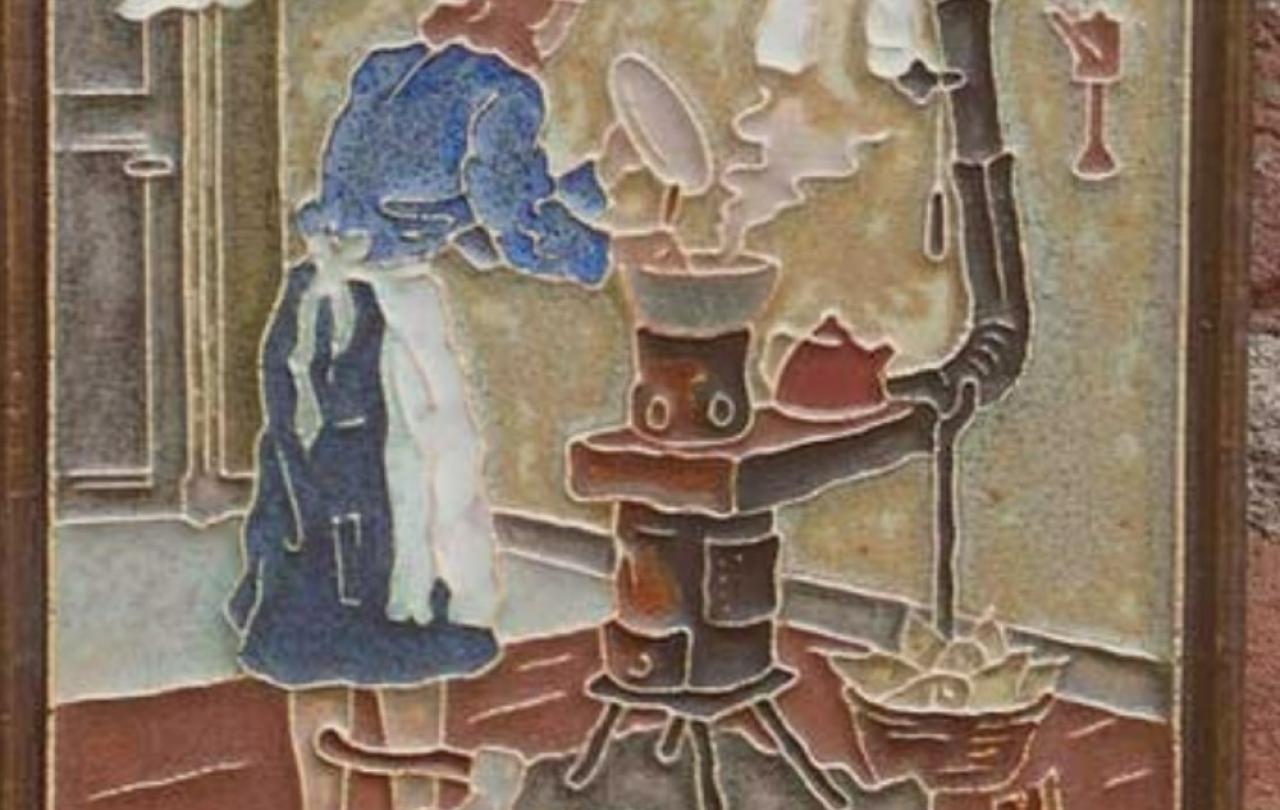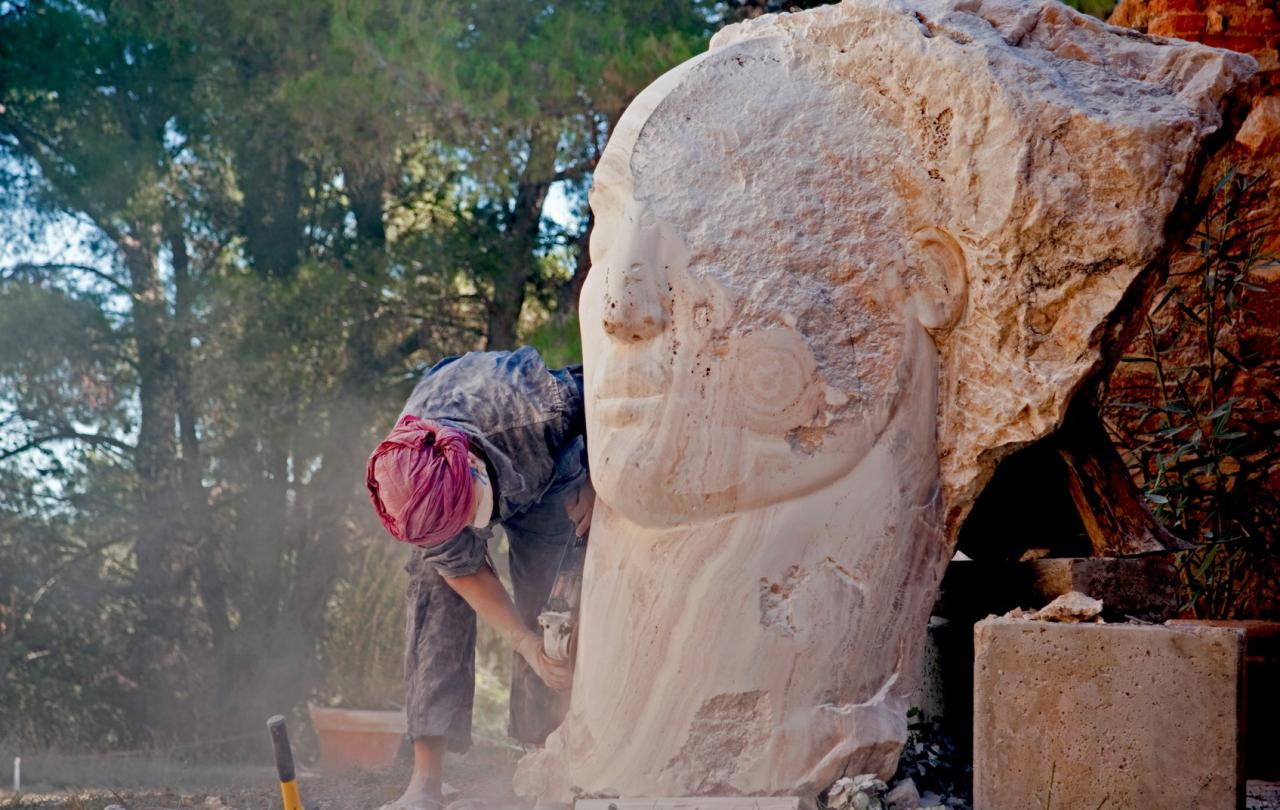
There’s no more exciting work in biology at the moment than thinking about organisms in terms of their environment. That’s a crucial part of the lively current scene in evolutionary thought (which I described in my previous article), and part of how a new generation of fascinating writers is urging us to throw off the overly narrow perspectives of the twentieth century. It’s not that Darwin’s fundamental insights were wrong, just that some of his followers took them to rule out, or discount, features of biology that turn out to be real and important.
In fact, Darwin was often ahead of the game here. He was more interested in cooperation between species, for instance, than many writers who went on to champion his ideas. He wrote brilliantly about the relationship between moths and orchids, for instance, and between plants and earthworms. Similarly, as Jessica Riskin has recently pointed out, he never dropped the idea that what organisms do during their lifetime affects what they pass on to their offspring (what he called ‘use and disuse’). For much of the twentieth century, that idea, of passing on of acquired characteristics, was biological heresy, but today it’s making a comeback.
The excitement in contemporary evolutionary biology can usefully be gathered under two headings. Alongside ‘organism and environment’, there’s also ‘extended heredity’, although the two are closely related on some points. They’re both important as part of the sort of discussion presented on this site – run in conjunction with the Church of England, of all things – not just because it’s good for religious institutions to demonstrate enthusiasm for science, but also because they’re full of ethical consequences.
Passing on to the progeny
Take ‘extended inheritance’: extended, in the sense that there’s so much more that’s inherited from parent to child than just a DNA sequence. For one thing, every organism bequeaths a world to its progeny, which means a world that’s at least somewhat adapted: at least a little (as with some bacteria, although others are adept at ‘ecosystem engineering’) or massively, as when a beaver completely changes its surroundings by building a dam, or when human beings cover the Earth with marvellous and terrible things. The transformed landscape of the beaver and the human being, even of the bacterium, is part and parcel of what they each pass on to their progeny, and therefore part of biological inheritance. That really puts the environment back at the centre of our thinking about organisms and evolution.
Taking a wider view than genes-are-all-you-pass-on has no lack of consequences. In their accessible and endlessly fascinating 2018 book Extended Heredity, Russell Bonduriansky and Troy Day show that narrow-mindedness on that front has had terrible consequences. They see it behind the Thalidomide birth defect tragedy, for instance, and the strange unwillingness of medics, in the middle of the twentieth century, to take the dangers of foetal alcohol syndrome seriously. If it’s a matter of scientific dogma that all that matters is what genes parents give to their offspring, other factors – like bothering to monitor what effects alcohol have on pregnant women and developing child, or the effects on them of a new medicine – don’t look as important as they should.
Genes aren’t everything, especially in the developmental phase (from conception through childhood and adolescence). Throughout that period, in particular, genes and environment dance an intimate tango, with genes turning on and off in response to its experience of its environment, before and after birth. Moreover, recent science shows that what happens to you during your lifetime can even be passed onto your offspring, and even to their children after them.
That flies in the face of the idea that all you have to pass on is the genetic hand of cards you were delt at conception (or its equivalent, for instance for a plant). On that hallowed view, the most that life has to offer from that moment on is testing your ‘fitness’, to see whether you manage to pass those genes on, or not, or how abundantly. But that’s far too limited a picture. We don’t just pass on genes; we also pass on the pattern of how genes are tagged to be turned on or off, and that is changed by the conditions the organism has experienced.
Hunger lessons
The most striking, but gruesome, example involving human beings is the ‘Dutch Hunger Winter’ of 1944–45, when occupying German forces starved the Dutch population in retaliation for resistance victories. Children conceived during that period grew up with poor metabolism (or, to be more accurate, metabolism that would be good at surviving starvation, but was not well-adapted to healthier post-war life nutrition, which is fascinating in itself). So much for genes being everything. More startling still was the observation that their children also had poor metabolism: the grandchildren of the starved pregnant women. We can pass on acquired characteristics, which really puts the cat among the twentieth century Darwinian pigeons. As the prophet Ezekiel put it, ‘The parents have eaten sour grapes, and the children’s teeth are set on edge’. This is full of ethical freight. The way we treat other people, and ourselves, affects those who come after us: yes, socially and culturally, which is significant enough, but even in how their bodies are programmed to develop.
A stimulating environment
There’s a similar ethical charge to what is perhaps my favourite part of the newly boisterous world of biology: phenotypic plasticity. That’s the simple idea that the same genes (the ‘genotype’) will produce a differently structured organism (the ‘phenotype’) in response to different environments. In one sense, it’s obvious enough. If I go to the gym for a year – a particular kind of environment – I’ll look different afterwards than if I’d spend an equivalent length of time on the sofa.
But it goes much further than that. Various plants will produce different sorts of leaves, for instance, depending on whether they grow in more or less shady situations. Sometimes, one species can be mistaken for two, as happened with fish, called cichlids, in Lake Tanganyika (between Tanzania and the Democratic Republic of Congo). What scientists had thought to be separate species, because their jaws are so different, turned out to be the same species. If a fish grows up at the bottom of the lake, it develops one mouth shape, with large, strong jaws, for munching shellfish; if a it with the same genes grows up at the top of the lake, it develops delicate jaws, useful for eating other kinds of food.
Again, the repercussions of ethics are enormous, and that brings us back to the ugly subject of eugenics, mentioned in the first of these articles. At root, eugenics is based on the assumption that some people just are healthy, and others just are sick, because some have ‘good genes’, while others have ‘bad genes’. You are either blessed with the former, or doomed with the later, and that’s set in stone, from conception. It’s then (supposedly) the ‘right thing’ to promote the former when it comes to reproduction and, at its most horrific, to restrain, sterilise, or even slaughter the latter. Eugenics cast its shadow over more of the twentieth century than we might like to admit. At one time or another, it was the darling of both the political right and the political left. It hasn’t gone away.
Before we say anything else, there’s a moral flaw in thinking that concern for the gene pool trumps concern for suffering individuals. More than that, though, the biology shows eugenics to be flawed even on its own, supposedly scientific, terms. We aren’t just blessed or doomed by the genetic hand of cards we’re delt at conception. Like those plants, growing in sunlight or shade, what our genes will mean is also determined by our setting. Like those African fish, our genes can run more than one programme, so the environment matters.
Eugenics presents the all-to-convenient picture that the sick will be sick, the weak will be weak, and that’s that. But we’re not just doomed or blessed by genes. It matters, for instance, what sort of housing we have, how we’re fed, and whether we have access to fresh air and places for exercise, and to stimulus for the mind, and companionship. Putting people into groups (healthy and sick, or worthy and unworthy), then writing off one of those groups might be politically and economically convenient, but it’s bad science, as well as bad morals.
Reason to be curious
I started this series by mentioning how important the theology and philosophy of the Middle Ages has been for me, in working between theology and science. In one of his little read works, Thomas Aquinas (1224–1274) defended having the expansive curriculum used in training Dominican friars like himself. (It helped that this curriculum was being drawn up, in part, by Albert the Great – perhaps the greatest polymath of his century, and later patron saint of scientists.) One should be open to knowing about everything, Aquinas argued, because you never know what will come in useful later on. We have an excellent, and timely example of that, in how something as obscure as phenotypic plasticity bears on eugenics, and the eminently practical question of proper housing.
Recently, in fact, the Church of England has been working hard on housing. The Bishop of Chelmsford, Guli Francis-Dehqani, has the new housing brief among the bishops. The church’s council for Mission and Public Affairs has also been busy, not least with the publication of Coming Home: Christian Perspectives on Housing in 2020. What might have seemed like rather abstract wranglings among biologists, over where to put the emphasis in their theories about nature, turns out to show how right it is to be passionate about good housing (and, it turns out, about keeping abreast of biology).
Suggested Further Reading
Brown, Malcolm, and Graham Tomlin, eds. 2020. Coming Home: A Theology of Housing. London: Church House Publishing.
Day, Troy, and Russell Bonduriansky. 2018. Extended Heredity: A New Understanding of Inheritance and Evolution. Princeton, NJ: Princeton University Press. An engaging introduction to a broadened picture of inheritance.
Jablonka, Eva, and Marion Lamb. 2020. Inheritance Systems and the Extended Synthesis. Cambridge University Press. A short discussion of many of the more expansive aspects proposed for contemporary evolutionary thought.
Jablonka, Eva, Marion J. Lamb, and Anna Zeligowski. 2014. Evolution in Four Dimensions: Genetic, Epigenetic, Behavioral, and Symbolic Variation in the History of Life. Revised edition. Cambridge, MA: MIT Press. One of the most substantial discussions of the new perspective.
Laland, Kevin, Tobias Uller, Marc Feldman, Kim Sterelny, Gerd B. Müller, Armin Moczek, Eva Jablonka, et al. 2014. ‘Does Evolutionary Theory Need a Rethink?’ Nature 514 (7521): 161–64. A short two-sided piece, asking whether a transformation in evolutionary thinking is under way.
Lyons, Nathan. 2019. Signs in the Dust: A Theory of Natural Culture and Cultural Nature. Oxford: Oxford University Press. A fascinating presentation of the idea that something like ‘culture’ is present throughout nature, for instance in what organisms make and pass on.
Riskin, Jessica. 2016. The Restless Clock: A History of the Centuries-Long Argument over What Makes Living Things Tick. Chicago: University of Chicago. Places recent tussles in biology in a longer historical context.
Sultan, Sonia E. 2015. Organism and Environment: Ecological Development, Niche Construction, and Adaptation. Oxford: Oxford University Press. A magnificent survey of the importance for science of studying organisms in relation to their environments.





